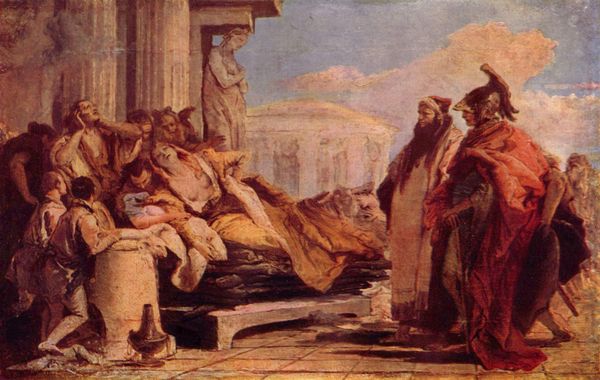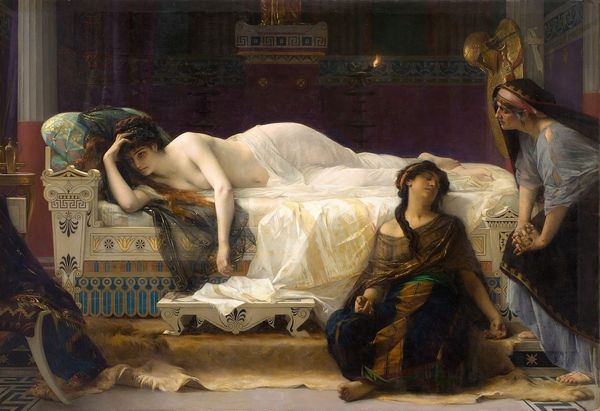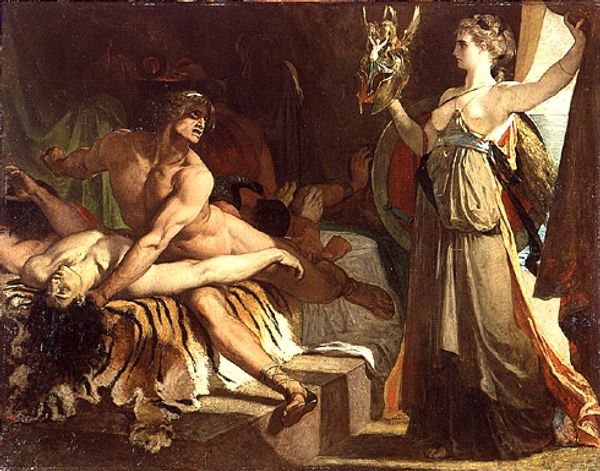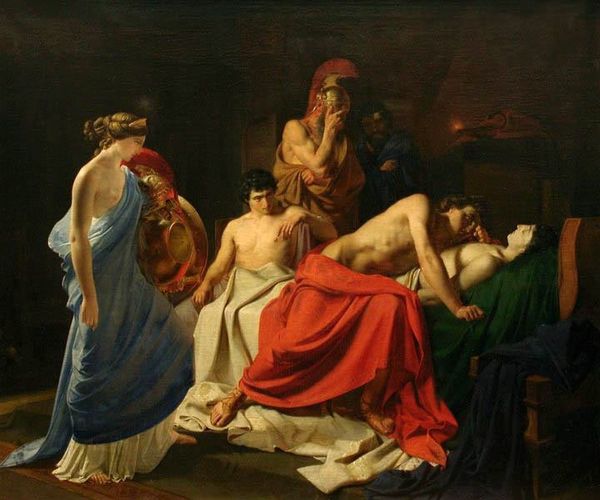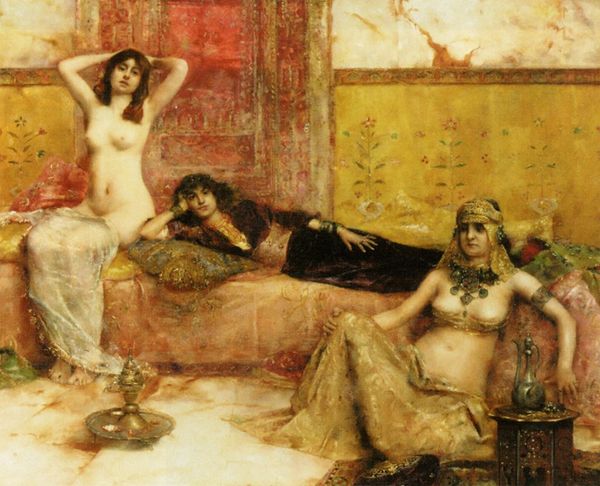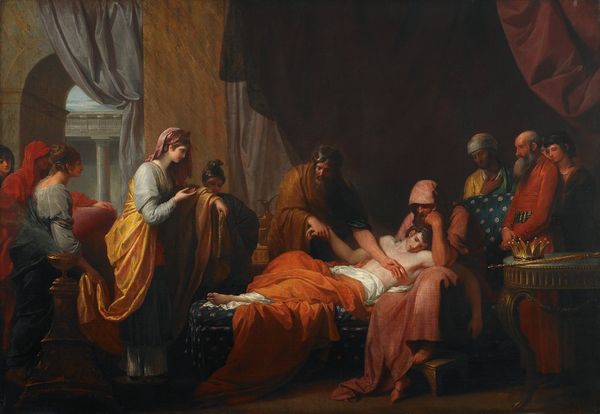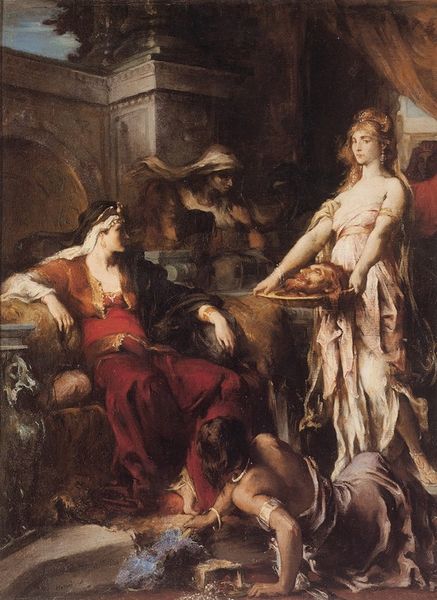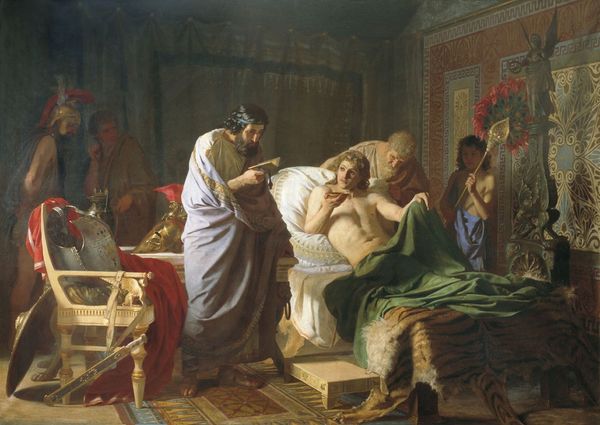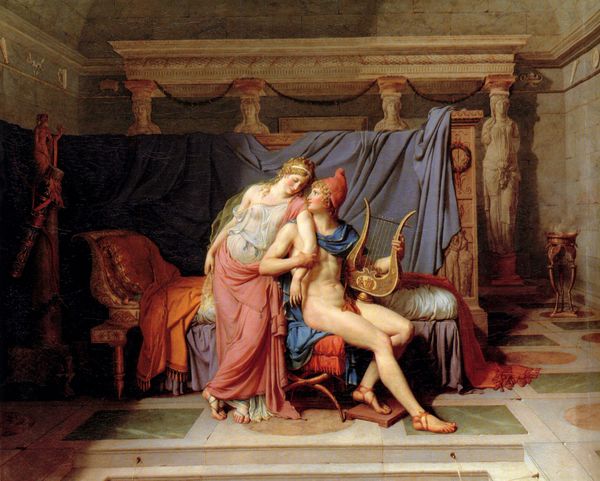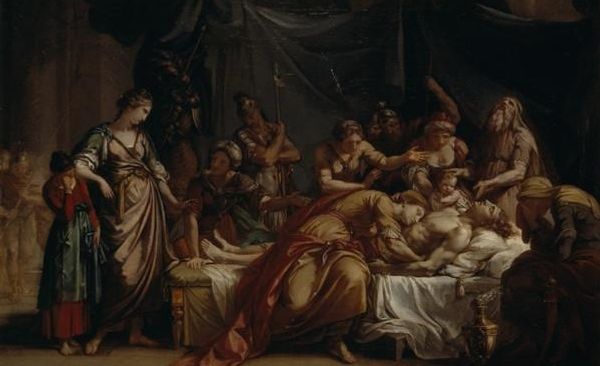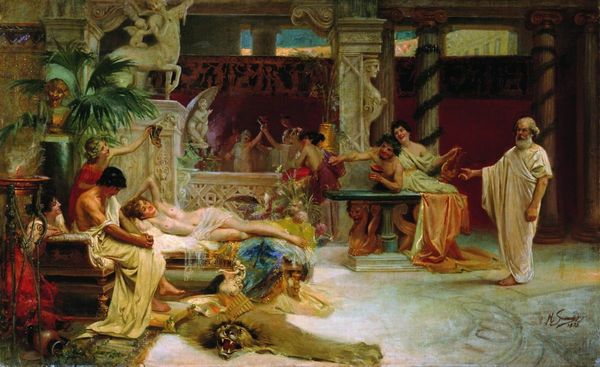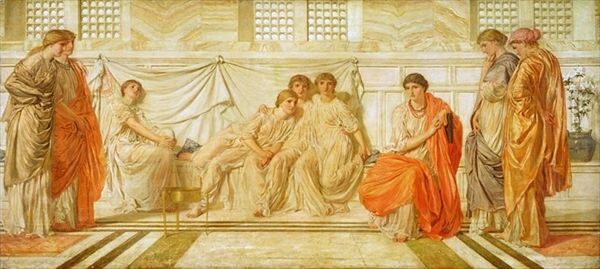
painting
#
portrait
#
neoclacissism
#
allegory
#
painting
#
landscape
#
figuration
#
mythology
#
history-painting
Copyright: Public domain
Editor: Pierre-Narcisse Guérin’s *Aeneas Tells Dido the Misfortunes of the Trojan City*, painted in 1815, is such an elegant composition. I find myself drawn to the central figures, especially the subtle contrast between Aeneas’s stoic pose and Dido’s languid posture. What layers are we seeing at play in this painting? Curator: Indeed. Beyond the immediate narrative, consider how Guérin uses classical imagery to construct a meditation on power, destiny, and the echoes of history. Note Aeneas's helmet and bearing versus the relaxed, almost vulnerable, Dido. Editor: I see what you mean. It is not just about the retelling of a story but about how their positions convey larger ideas about their fate. Is the architectural backdrop relevant? Curator: Absolutely. The columns and statue frame the scene, drawing visual and thematic parallels between Carthage and the fallen Troy. Think about what columns and monuments signify: permanence, glory, civilization. Does their presence enhance or diminish the tragedy unfolding? Editor: It seems like their presence foreshadows future destruction. It’s almost like a memento mori but for civilizations. Curator: Precisely! And that Cupid? Why show him pulling at Dido's robes? He represents something more complex than mere love, right? Editor: That’s true, given Venus sent Cupid to make Dido fall in love with Aeneas. It makes the situation all the more tragic because Dido’s fate has been sealed since the beginning. Curator: These aren't just figures; they are vessels for cultural memory. Their actions carry the weight of the past and prefigure the future. Editor: I will never read Virgil the same way again. The layers of meaning encoded in these images—it’s fascinating. Curator: It's how symbols persist and transform across centuries, shaping our understanding of the world.
Comments
No comments
Be the first to comment and join the conversation on the ultimate creative platform.

